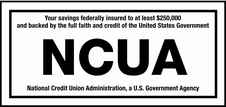
Have you always dreamed of owning a home but felt you couldn’t afford it? There are many possibilities, and owning a home is within reach! Chances are that even with your current household budget, you can put aside enough savings for a down payment on a house in one or two years, maybe even less. It’s all a matter of how you manage your money.
The challenge with buying a home is that real estate prices are rising faster than salaries. Prices for real estate in desirable areas like the Pacific Northwest are skyrocketing because fewer homes are available. However, according to a Bank of America study, 72% of millennials place home ownership at the top of their priority list—outranking travel (61%), getting married (50%), and having children (40%)—and 90% of first-time buyers want a home in a preferred location, which drives up prices. Many people spend more than 30% of their income on rent, so when you couple the increase in demand for property with financial burdens such as student loans and rising rents, it’s no wonder people feel home ownership is out of reach.
Financial fears not only stop young professionals from considering a home purchase, but they also perpetuate real estate myths, such as the one that claims you always have to put 20% down on a home. There is plenty of misinformation about mortgages and home loans. The truth is that lenders want to work with first-time homebuyers so they can afford a new home with little or no down payment.
How Much Will You Need?
Before you can start saving, you need a savings goal. There are a number of factors to consider.
First, consider how much house you can actually afford based on your household income. The rule is that you don’t want your mortgage payment to exceed 28% of your income. When you add in property taxes and insurance, you don’t want the total costs to exceed 32%. Use one of our many tools available to determine how much you can afford.
Although it’s not necessarily a requirement, if you want to be conservative and you have the funds available, we recommend putting down 20% of the home price. Depending on where you want to live, you can compare what you can afford with the area’s housing market. In the Pacific Northwest, for example, the median home price in Portland is $388,000, and the median home price in Vancouver, Washington, is $320,900. That means you would need to save $65,000-$78,000 for a 20% down payment.
The good news is that as a first-time homebuyer, you don’t need to make the full 20% down payment. Many lenders will give you a mortgage for 5% down or less, depending on your finances, which means you may need to save only $16,000-$20,000. Here at iQ, we have a special 100% financing program, which provides the flexibility in down payment options without adding the burden of property mortgage insurance. Learn more about our home loan options here!
These estimates should give you an idea of what you can afford, as well as a target for your down payment savings. To understand exactly what mortgages are available and how much you can spend on a home, you should consult your credit union.
Start Saving!
If you are like most Americans, your household budget is tight, and you are spending what you earn on food, rent, insurance, healthcare, and other expenses. According to the Bureau of Labor Statistics, Americans are spending more on eating out and entertainment as well as healthcare and rent. Take a hard look at your household budget and determine how much you can save each month, and where you can cut back on spending.
Now establish a timeline. Do you want to be ready to buy a home in two years, three years, five years? Once you have a timeline in mind, you can determine how much you need to put aside each month to achieve your savings goals.
Now start building your savings. Here are some tactics to consider:
- Start with a savings account. It’s the easiest way to set aside cash for a specific use, such as a home down payment. To speed up your savings, look for a high-yield savings account to grow your savings faster.
- Use automated savings plans. Most banks and credit unions let you automatically transfer money from checking to savings, which is a great way to build your savings.
- You can also shop for an interest-bearing checking account to build your savings.
- Put money into your savings instead of expensive vacations, a new car, or other expenses.
- Once you start building a nest egg, consider converting it to certificates of deposit (CDs). CDs earn higher interest and will lock your money away until you are ready to use it.
- Save those windfalls such as inheritances, tax refunds, or bonus paychecks and put them toward a down payment.
- Rethink your retirement savings. Real estate values have risen more than 40% in the last 20 years, so investing in a home should yield higher returns than an IRA or 401(k). However, there may be tax consequences if you cut back on your retirement savings, so calculate carefully.
- Build flexibility into your savings. You should have an emergency fund with three months’ living expenses, just in case, but you can also add that money to your down payment savings.
These are just some of the ways you can put away savings for a down payment on a new home. As you get closer to your savings goal, talk to a home loan specialist. They will be able to determine what your options are as a first-time homebuyer and help you prequalify for a mortgage so you know exactly what you can afford.
Remember, you may think home ownership is out of reach, but with a little financial planning, you should be on your way to saving enough for a down payment on a home.



Comments